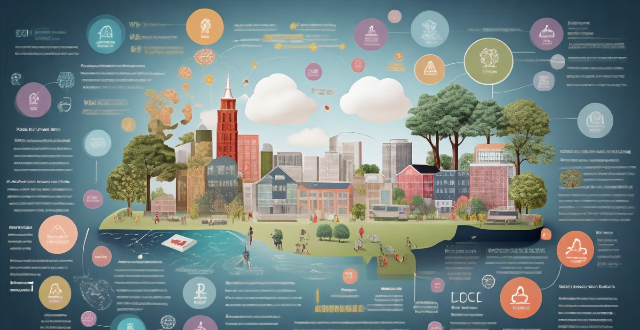The relationship between climate goals and sustainable development goals (SDGs) is crucial for addressing global challenges and promoting a more equitable and sustainable future. Both sets of objectives are interdependent and mutually reinforcing, with climate goals often serving as a foundation for achieving SDGs. Efforts to combat climate change can help preserve ecosystems, transition to clean energy sources, and invest in resilient infrastructure, directly supporting various SDGs. Conversely, achieving SDGs such as poverty alleviation, education, and sustainable consumption can indirectly contribute to climate goals by reducing dependence on environmentally harmful practices and promoting responsible consumption patterns. Integrated approaches that ensure policy coherence, align financial flows, and engage multi-stakeholder collaboration can amplify the impact of both sets of goals. Shared benefits include improved health and well-being, economic growth, and social inclusion. Recognizing the interconnection between climate goals and SDGs is essential for harnessing the full potential of collective efforts towards a sustainable future.

Relationship between Climate Goals and Sustainable Development Goals (SDGs)
The relationship between climate goals and sustainable development goals (SDGs) is interdependent and mutually reinforcing. Both aim to address global challenges and promote a more equitable and sustainable future for all. In this response, we will explore the connection between these two critical sets of objectives.
Introduction
Climate goals refer to the targets set by countries and organizations to reduce greenhouse gas emissions, mitigate the impacts of climate change, and adapt to its effects. On the other hand, the Sustainable Development Goals are a collection of 17 interconnected goals adopted by the United Nations in 2015 to end poverty, protect the planet, and ensure that all people enjoy peace and prosperity.
Interdependence
Climate Goals as a Foundation for Achieving SDGs
- Clean Energy: Achieving climate goals often involves transitioning to clean energy sources, which directly supports SDG 7 (Affordable and Clean Energy) by increasing access to renewable energy and energy efficiency.
- Ecosystem Protection: Efforts to combat climate change can help preserve ecosystems, aligning with SDG 15 (Life on Land) and promoting biodiversity conservation.
- Resilient Infrastructure: Investments in resilient infrastructure not only aid in adapting to climate change but also contribute to SDG 9 (Industry, Innovation, and Infrastructure), ensuring sustainable industrialization and fostering innovation.
SDGs as Catalysts for Climate Action
- Poverty Alleviation: Addressing poverty (SDG 1) can lead to improved livelihoods and reduced dependence on environmentally harmful practices, indirectly contributing to climate goals.
- Education and Awareness: Achieving quality education (SDG 4) and promoting environmental awareness can empower individuals to make informed decisions that support climate action.
- Sustainable Consumption: Encouraging responsible consumption and production patterns (SDG 12) can significantly reduce waste and pollution, aligning with efforts to mitigate climate change.
Mutual Reinforcement
Integrated Approaches
- Policy Coherence: Integrating climate considerations into national policies can enhance the effectiveness of both climate goals and SDGs, ensuring coherent strategies across sectors.
- Finance and Investment: Aligning financial flows towards sustainable projects can simultaneously advance climate action and support various SDGs, such as clean energy or sustainable cities (SDG 11).
- Multi-stakeholder Collaboration: Engaging governments, civil society, the private sector, and individuals in joint efforts can amplify the impact of both sets of goals.
Shared Benefits
- Health and Well-being: Tackling climate change can improve air quality and reduce health risks, directly contributing to SDG 3 (Good Health and Well-being).
- Economic Growth: Investing in green technologies and sustainable practices can stimulate economic growth while achieving climate goals, resonating with SDG 8 (Decent Work and Economic Growth).
- Social Inclusion: Ensuring that climate actions and sustainable development initiatives are inclusive can uphold social equity principles, reflecting the essence of multiple SDGs.
Conclusion
The synergy between climate goals and sustainable development goals is undeniable. By working together toward these objectives, we can create a pathway that leads to a more sustainable, equitable, and resilient future for all. It is imperative that global leaders, organizations, and individuals recognize this interconnection and act accordingly to harness the full potential of our collective efforts.